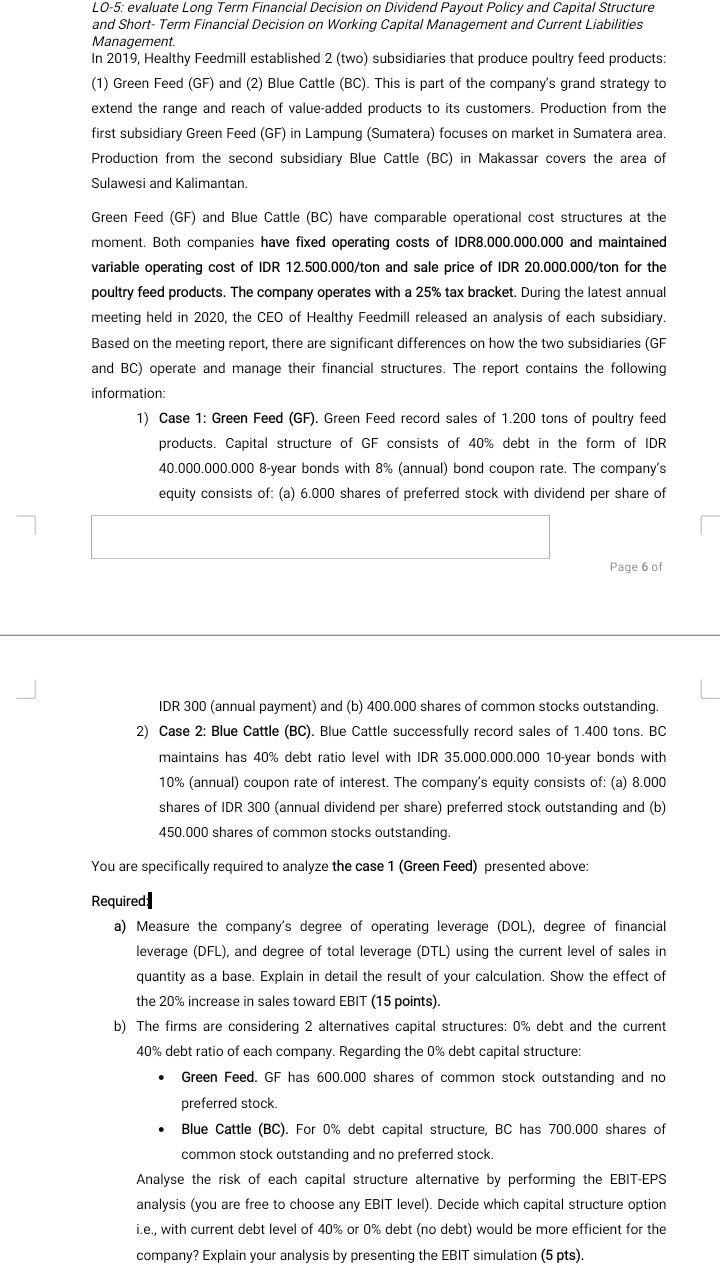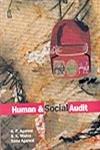Answered step by step
Verified Expert Solution
Question
1 Approved Answer
LO-5: evaluate Long Term Financial Decision on Dividend Payout Policy and Capital Structure and Short-Term Financial Decision on Working Capital Management and Current Liabilities Management

LO-5: evaluate Long Term Financial Decision on Dividend Payout Policy and Capital Structure and Short-Term Financial Decision on Working Capital Management and Current Liabilities Management In 2019, Healthy Feedmill established 2 (two) subsidiaries that produce poultry feed products: (1) Green Feed (GF) and (2) Blue Cattle (BC). This is part of the company's grand strategy to extend the range and reach of value-added products to its customers. Production from the first subsidiary Green Feed (GF) in Lampung (Sumatera) focuses on market in Sumatera area. Production from the second subsidiary Blue Cattle (BC) in Makassar covers the area of Sulawesi and Kalimantan. Green Feed (GF) and Blue Cattle (BC) have comparable operational cost structures at the moment. Both companies have fixed operating costs of IDR8.000.000.000 and maintained variable operating cost of IDR 12.500.000/ton and sale price of IDR 20.000.000/ton for the poultry feed products. The company operates with a 25% tax bracket. During the latest annual meeting held in 2020, the CEO of Healthy Feedmill released an analysis of each subsidiary. Based on the meeting report, there are significant differences on how the two subsidiaries (GF and BC) operate and manage their financial structures. The report contains the following information: 1) Case 1: Green Feed (GF). Green Feed record sales of 1.200 tons of poultry feed products. Capital structure of GF consists of 40% debt in the form of IDR 40.000.000.000 8-year bonds with 8% (annual) bond coupon rate. The company's equity consists of: (a) 6.000 shares of preferred stock with dividend per share of Page 6 of IDR 300 (annual payment) and (b) 400.000 shares of common stocks outstanding. 2) Case 2: Blue Cattle (BC). Blue Cattle successfully record sales of 1.400 tons. BC maintains has 40% debt ratio level with IDR 35.000.000.000 10-year bonds with 10% (annual) coupon rate of interest. The company's equity consists of: (a) 8.000 shares of IDR 300 (annual dividend per share) preferred stock outstanding and (b) 450.000 shares of common stocks outstanding. You are specifically required to analyze the case 1 (Green Feed) presented above: Required a) Measure the company's degree of operating leverage (DOL), degree of financial leverage (DFL), and degree of total leverage (DTL) using the current level of sales in quantity as a base. Explain in detail the result of your calculation. Show the effect of the 20% increase in sales toward EBIT (15 points). b) The firms are considering 2 alternatives capital structures: 0% debt and the current 40% debt ratio of each company. Regarding the 0% debt capital structure: Green Feed. GF has 600.000 shares of common stock outstanding and no preferred stock Blue Cattle (BC). For 0% debt capital structure, BC has 700.000 shares of common stock outstanding and no preferred stock. Analyse the risk of each capital structure alternative by performing the EBIT-EPS analysis (you are free to choose any EBIT level). Decide which capital structure option i.e, with current debt level of 40% or 0% debt (no debt) would be more efficient for the company? Explain your analysis by presenting the EBIT simulation (5 pts)
Step by Step Solution
There are 3 Steps involved in it
Step: 1

Get Instant Access to Expert-Tailored Solutions
See step-by-step solutions with expert insights and AI powered tools for academic success
Step: 2

Step: 3

Ace Your Homework with AI
Get the answers you need in no time with our AI-driven, step-by-step assistance
Get Started


